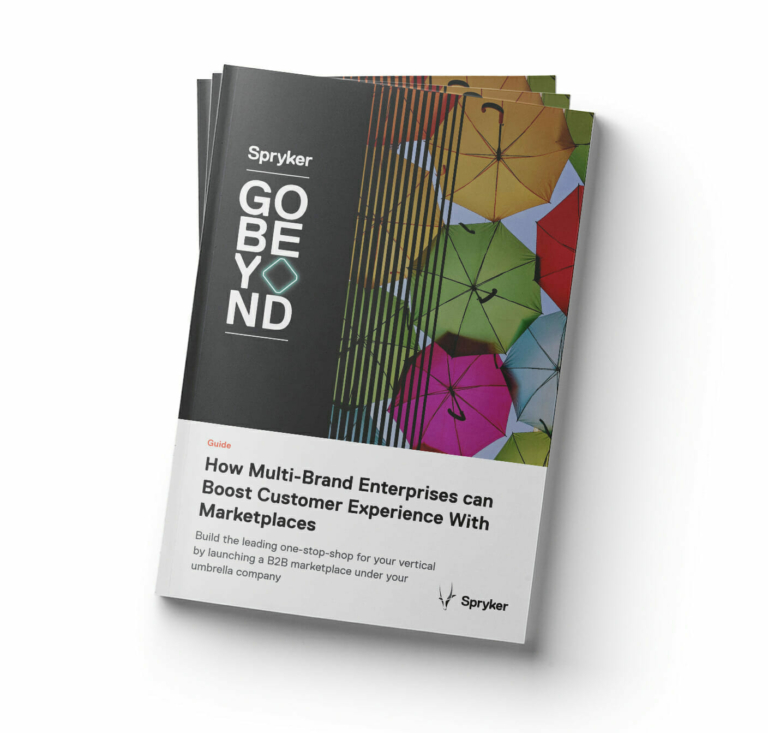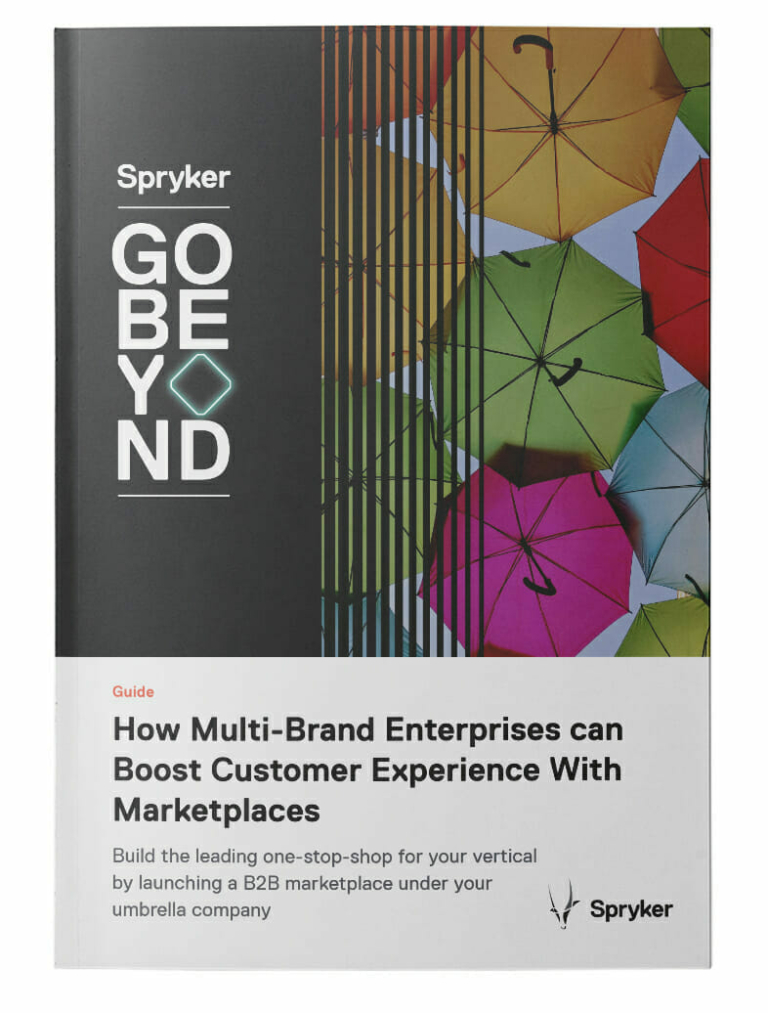Guide
How Multi-Brand Enterprises can Boost Customer Experience With Marketplaces
This guide explains how multi-brand enterprises can leverage marketplace technology to create the leading store in your specific B2B vertical. You will discover:
- The relevance and potential of B2B marketplaces for multi-brand enterprises
- Concrete use cases – how to launch the one-stop-shop for your vertical
- Benefits summarized for stakeholders to help you get that all-important buy-in.
- What a multi-brand marketplace would actually look like.

Reading sample
B2B marketplace status quo
When you hear the word marketplace, do you immediately think of B2C and verticals such as fashion and fast moving consumer goods (FMCG)? Many B2B organizations mistakenly believe that marketplaces can only benefit the B2C domain – especially without tangible business use cases. We’ll cover specific examples later on in this guide, but for now let’s focus on what B2B enterprises are missing out on by not exploring a marketplace as a new sales channel.
The Covid-19 pandemic resulted in major disruption for all industries and did not discriminate between B2C and B2B. This led to the unprecedentedly quick adoption of digital commerce technologies and strategies – including enterprise marketplaces – for both B2C and B2B.
